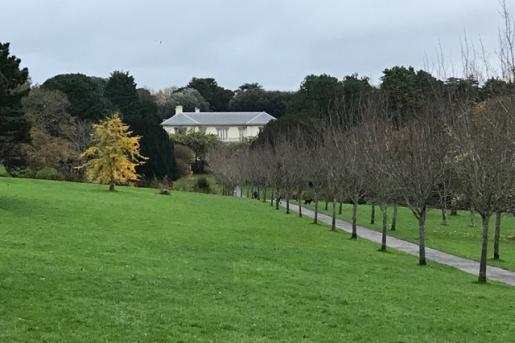- Public Park
- C20
Central Park is the largest (171 acres) public park in Devon, originally planned as a major lung for the city. The land was acquired between 1925 and 1929 and comprised Pounds House with its surrounding grounds and a collection of farms, sold cheaply by Lord St Levan to the City Council in 1923 on condition that they remained public open space.
The City Council commissioned the renowned firm of landscape architects, TH Mawson and Sons, to design the park. It was to be their last public park commission. Most of the work was done by Edward Prentice Mawson and he presented his far-sighted report to the Hoe and Parks Committee in October 1928. (It is a mystery why the name E. Reuben Mawson appears in the minutes as there was no family member with this name.) By 1929 the Ministry of Health had approved the laying out of Central Park as a suitable work of public utility for the relief of unemployment, and works estimated to cost £18,400 were put in hand. The park opened in July 1931 and surviving features from that time include the bowling greens, the main paths although not all were made, and car-parking for 700 to 800 cars in anticipation of an enormous growth in motor traffic. Pounds House and the Home Park football stadium were already in existence.
During the second world war, much of the park was given over to food growing, whilst other uses included an emergency feeding station, air raid shelters and a hutted camp. In the second half of the twentieth century, a great deal of un-coordinated development took place, with a zoo (1962), swimming pool (1965), golf course (1965), sports hall (1970), and training pitches for Plymouth Argyle (1975). They caused much acrimony within the City Council and in consultation with the public over the erosion of the landscaped parkland. By the mid 1970s, only half of the original 234 acres opened by the Mayor in 1931 remained as open space. Completion of the Life Centre in 2012 with its park-facing frontage did much to restore harmonious spatial relationships in the central part of the park. The challenges now lie in the park’s northern areas where developments have left Pounds House somewhat isolated from the wider parkland, and sensitive management will be essential for realising the long-held aim of Central Park becoming a premier park. Pounds House built in 1829 on the site of an earliier house is surrounded by pleasure grounds including the remains of a Camellia house.
A full history of the park is available on www.focpp.org.uk/timeline
In the northern most part of the Park is Pounds House, a Grade II listed large 19th century villa (centred approximately at NGR: SX47488 56999). Details of this property can be found on the EH Images of England website.
Cherry & Pevsner: The Buildings of England – Devon, 1989: 670
S Pugsley: Devon Gardens – An Historical Survey, 1994: 151-2

